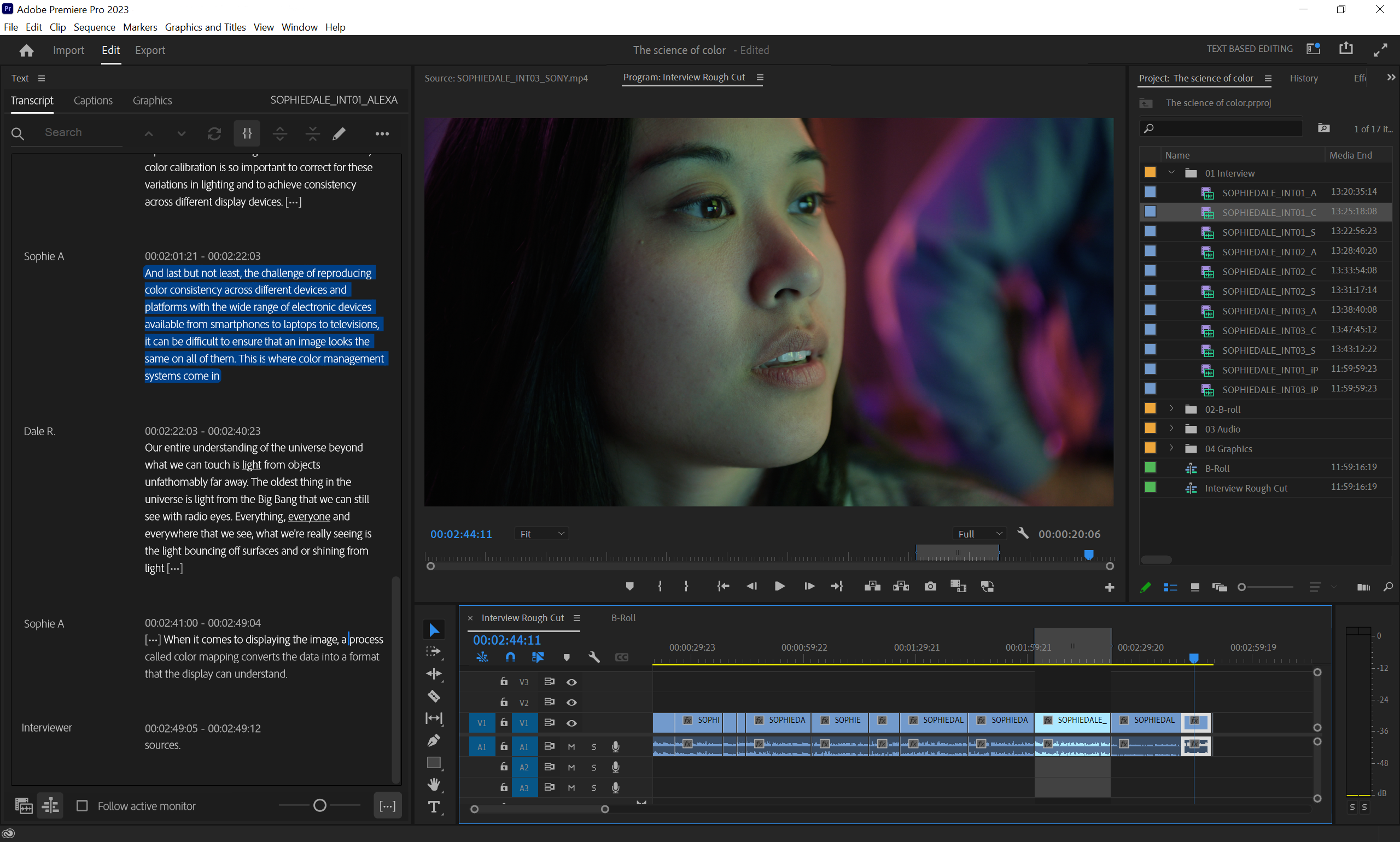GoPro HERO6
GoPro is synonymous with action cameras, and the new HERO6 ups the ante with high frame rate 4K recording and a new processing chip that delivers better dynamic range, color reproduction and low-light performance than the HERO5. You can record 4K video at up to 60p, 2.7K-resolution video at 120p and 1080 HD video at up to 240p. GoPro improved the electronic image stabilization in the camera, too, stabilizing across six axes versus four on the HERO5. There’s also a new touch zoom (digital zoom) feature and a faster Wi-Fi connection. The HERO6 can automatically send videos to your phone where the GoPro app will automatically edit them, add effects and spit out your own highlight reel. Like the HERO5, the 6 features a touch display and is waterproof to a depth of 33 feet without a housing.
Olympus TG-5
What sets the TG-5 apart from its action cam competitors is a series of sensors to record data—either simultaneously, with video or independently. The camera’s Field Sensor System features a GPS sensor, manometer, compass and temperature sensor. Thanks to the camera’s built-in Wi-Fi, this data can be relayed to smartphones and displayed alongside your stills and video on the Olympus Image Track App. You can also check this data on the camera’s 3-inch display, even when the camera is powered off. Beyond its intelligent interior, the TG-5 is built to dive up to 50 feet underwater, withstand 220 pounds of force, falls from 7 feet and temperatures down to 14°F.
The TG-5 can record 4K/30p video, full HD up to 120 fps and 4K time-lapse movies. It features a max ISO of 12,800 and can capture RAW still image files.
Price: $450
getolympus.com
Leica X-U
The X-U is Leica’s first waterproof and durable compact. It features a 16-megapixel APS-C-sized CMOS sensor housed in a waterproof, dust-proof and shock-proof body. It can dive up to 49 feet underwater for up to 60 minutes and survive a drop from up to 4 feet. It features a built-in Summilux 23mm f/1.7 ASPH lens with a 35mm-equivalent field of view. Like most waterproof cameras, the X-U has an underwater shooting mode to correct color shifts, but unlike many waterproof models, this mode has its own shutter button to instantly shoot an image with the mode activated.
Price: $3,295
us.leica-camera.com
Panasonic Lumix TS30
Ready for the elements, the TS30 can dive under 26 feet of water and survive falls from 4.9 feet high. It features a 16-megapixel image sensor and a 29-108mm (equivalent) lens. A torch light function activates a small video light to improve visibility underwater. Plus, there’s optical image stabilization to keep your footage steady even if you’re bobbing on the waves.
Price: $150
panasonic.com
Fujifilm XP120
Low cost and lightweight, the XP120 is waterproof to a depth of 65 feet and can survive falls from 5.7 feet. It’s equipped with a 16-megapixel back-illuminated CMOS sensor, a 3-inch display and a fixed 5x optical zoom lens (28mm-140mm, 35mm equivalent) with optical image stabilization. New for Fuji cameras is a Cinemagraph mode that creates still images with moving elements. You can film full HD videos at 60p and shoot bursts at 10 fps.
Price: $230
fujifilmusa.com
Sony RX0
While it has the shape and durability of an action camera, the RX0 has the guts of a cinema camera. First, it has a 1-inch, 15-megapixel image sensor, much larger than the 1/2.3-inch sensors typically found in action cameras. While it can’t record 4K video internally, it does support clean HDMI output for sending a 4K signal to an external recorder. You’ll also get high frame rate HD recording, up to 250 fps, plus Sony’s Slog2 color profile and time code. You can dunk the RX0 in up to 33 feet of water without a housing and it’s shock- and dust-proof, too. The RX0 can be rigged up with other RX0s in an accessory housing for shooting virtual reality. You can control up to five RX0s using Sony’s PlayMemories mobile app.
Intova X2
The X2 dives way deeper than just about any action camera on the market, with an integrated housing that can descend up to 330 feet underwater. It has a built-in 150-lumen LED light to help you bring the murky deep into focus. While it can’t record 4K, it does support full HD recording at up to 60 fps and 16-megapixel still capture.
Price: $350
intova.com
360 AND VR CAMERAS
Nikon KeyMission 360
The KeyMission has a pair of image sensors and f/2 wide-angle lenses on either side of its shockproof body. It can record fully spherical 360-degree stills at 24 megapixels and 4K video with no blind spots. It uses electronic Vibration Reduction technology to keep high-definition footage steady (though not 4K). The KeyMission is waterproof to a depth of 100 feet without a housing and has Wi-Fi and Bluetooth for remote control.
Price: $500
nikonusa.com
Insta360 Pro
When it comes to realistic VR, more is more. That is, the more lenses and image sensors you can throw at a scene, the greater depth and realism you’ll be able to capture. The Insta360 Pro sports six cameras and f/2.4 lenses capable of recording 8K 360-degree video or a 60-megapixel 360-degree still image. If you record in 6K, the camera is able to capture 3D video with stitching performed in post. If you record in 3D 4K, the camera can stitch the individual video streams together internally in real time. The Insta360 Pro can also livestream a 4K 360-degree video via Wi-Fi or Ethernet. It has a removable battery, HDMI output and stores footage locally to an SD card.
Price: $3,499
insta360.com
Humaneyes Vuze
The Vuze is essentially eight cameras in one that are capable of recording a 3D image that’s 360 x 180 degrees. It’s not fully spherical, but it is three dimensional. It uses eight full HD image sensors with an auto ISO range of 100 to 1600. It can deliver 4K/30p resolution per eye in a VR headset or Google Cardboard. On the audio side, there are four microphones that capture four individual (AAC-encoded) tracks. The Vuze is controlled through a smartphone and footage is stitched together using free desktop software for PCs and Macs. You’ll enjoy real-time stitching on PCs but older Macs may stitch slower. A firmware update due for 2018 will add livestreaming to the Vuze’s feature set.
Price: $799
vuze.camera
Kodak Pixpro Orbit360 4K
The Orbit360 has two 20-megapixel image sensors fronted by a pair of wide-angle lenses. One lens is a 197-degree f/2.4 and the second is an even wider 235-degree lens with the same fixed f/2.4 aperture. When shooting in VR mode, both lenses and image sensors combine to create a fully spherical capture at 7360 x 3680 for stills or 3840 x 2160 for video (at 24p) that’s automatically stitched in camera. You can also shoot from just one of the lenses, giving you a total of three different options for framing your scene. There’s electronic image stabilization and a 5 fps still photo burst mode.
Price: $500
kodakpixpro.com
Yi Technology 360 VR Camera
Yi Technology’s straightforwardly named 360 VR camera records 5.7K resolution video (5760 x 2880) at 30p via a pair of 220-degree wide-angle lenses and two 12-megapixel CMOS image sensors. If you opt for lower-resolution 4K/30p 360-degree footage, you’ll enjoy automatic in-camera stitching. You can connect the camera to a mobile device via Wi-Fi to remotely control the camera and preview, playback, edit and share your 360-degree videos. It also includes a Bluetooth remote control. An auto-sync feature will transfer still images from the camera to your phone automatically—without any intervention on your part. Beyond recording, the camera also supports live-streaming a 2.5K resolution 360-degree video at 30 fps.
Price: $399
yitechnology.com
GoPro Fusion
The Fusion boasts a pair of cameras capable of filming 5.2K resolution spherical videos at 30p. It can also capture 18-megapixel spherical stills. The camera is packed with a number of sensors, including a gyroscope, accelerometer and compass to help stabilize footage. It features GPS, Wi-Fi and Bluetooth for remote control; it can also be controlled via voice command. It’s waterproof to a depth of 16 feet without a housing. It’s compatible with most GoPro mounts and will ship with a monopod. One of the more interesting aspects of the Fusion is a capability coming in 2018 through an update to the GoPro app. Dubbed “OverCapture,” it will allow Fusion users to record a spherical video and then use their phone to easily crop out a flat, 16:9 HD video from the footage.
Ricoh Theta V
The Theta V supports 4K/360-degree recording and 4K/360-degree live streaming. The V is built around the Android operating system so third-party developers can create apps to extend the camera’s functionality. One such app, to support remote playback capability on external displays, will launch soon. With the app, you’ll be able to use the Theta V as a remote control to pan through 360-degree video on the big screen. The camera can capture omni-directional audio via a four-channel microphone and uses Bluetooth Low Energy to remain constantly connected to your mobile device. You store your footage to 19GB of internal storage—good for 40 minutes of 4K footage or 4,800 spherical stills.
Price: $430
us.ricoh-imaging.com
Sphericam Beast
If you’re serious about VR, the aptly named Beast can capture four cinema-friendly 10-bit 4K RAW files via four 1-inch image sensors. You use a camera storage and processing box to preview the image from each sensor and adjust camera settings. There’s a 10-second recording delay to give you time to duck out of the way. Sphericam has teamed with Sennheiser to make its Ambeo VR mic interoperable with the Beast so you can pair its high-quality video with ambisonic audio for greater realism.
Price: TBD
sphericam.com
Related: Movie Mavens: New Video and VR Cameras
Mastering Surround Sound
Shooting VR Footage: Getting Started




















